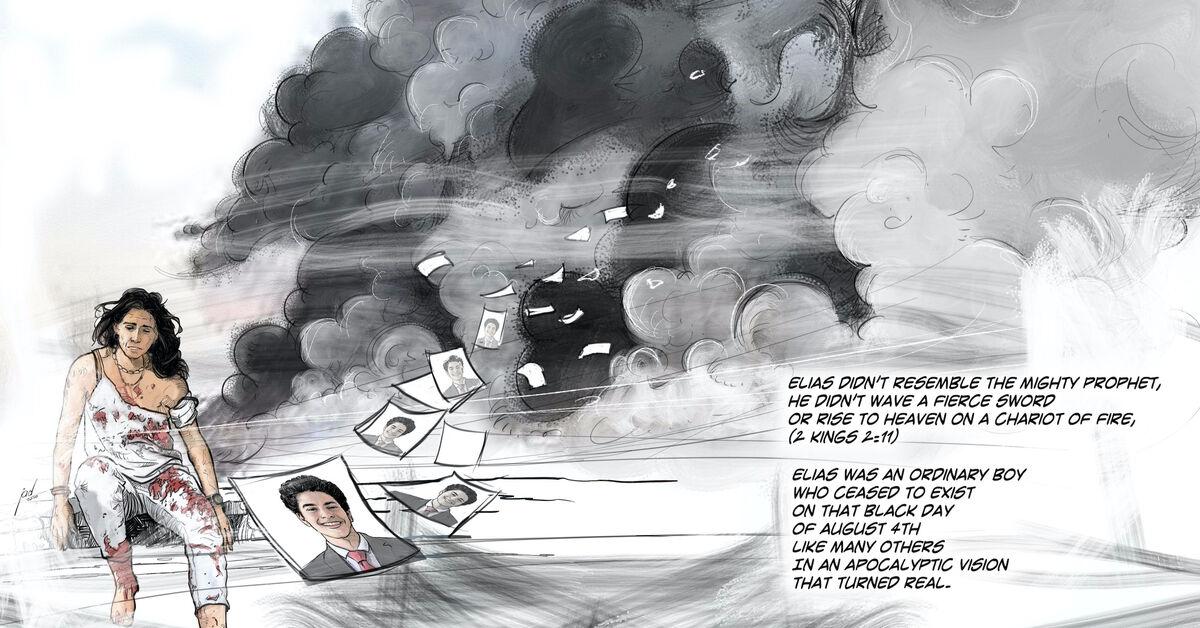
Recently published comics and graphic novels in the Middle East and North Africa, although not yet mainstream, confirm the creative efforts of Arab youth.
A new magazine with the graphic title of (.+..) was presented last November at the seventh edition of the international Cairo Comix Festival. Founder and director George Khoury, aka Jad, known as the pioneer of the Arab comic movement, published the first comic book for adults in the Arab region, “Carnaval,” in 1980. In 2019 he won the Mahmoud Kahil Award, the top award for comics, cartoons, and illustration in the region.
“I would like to publish articles, essays, translations, and interviews to better explore the ideas behind the comics,” Jad told Al-Monitor. The first thematic issue features the work of Salam Alhassan from the Syrian collective Comic4 Syria, Seif Eddine Nachi from Tunisia, as well as other well-known artists such as Lena Merhej and Ganzeer.
The comic business is far from lucrative in the Middle East and North Africa. However, the medium builds on a fertile culture of illustrated and comics literature, initially mostly for children, and political cartoons.
Cairo and Beirut, traditionally the rival poles of Arab literature and publishing, are today the leading centers for comics in the region. In April, the Rada and Mutaz Sawaf Center for Arab Comics Studies at the American University in Beirut announced the winners of the eighth annual Mahmoud Kahil Awards.
The center is named after Mutaz Sawaf, an engineer with a strong interest in comics and animation who made his fortune in constructions. He also established Tosh Fesh, a nonprofit organization that supports Arab political cartoonists and comics.
In Cairo, the publishing houses Aseer El Kotb and Dar El Mahrousa have generated a lot of attention. In the same vein, Egyptian comic artist Shennawy’s initiative Al Fann Al-Tasi’a was launched in 2012 to publish the magazine TokTok as well as comic books. In 2020 it released an anthology of the works of the satirical cartoonist Hijazi (1936-2011): Tanablat Alsobian —An hidden gem.
Arab comics can now be purchased in translation in selected European and American bookshops. Jorj Abou Mhaya’s first graphic novel, Ville avoisinant la terre (A City Neighbouring Earth), was originally published in Arabic in 2011 by Beirut Dar Onboz and translated into French by Éditions Denoël. Ganzeer’s serialized comic The Solar Grid was originally released in English by Radix Media in Brooklyn. A political sci-fi epic, it explores the relationship between environmentalism, capitalism and race relations.
Salam à Marseille, later renamed Salam (Peace), by Lena Merhej, which won the Mahmoud Kahil Award, was published in 2019 by Beirut Samandal Comics, whose publications are sold within the European Union.
Salam, by Lena Merhej (courtesy of the artist)
Salam is a black-and-white comic book without words about migration. “I drew Salam when I was living outside Lebanon and was faced with the issue of being a migrant and not being able to speak,” Merhej told Al-Monitor. She is a founding member of Samandal collective, and a children’s book author. Born from a Lebanese father and a German mother, Merhej, who currently resides in Marseille, is planning to relocate to Beirut.
Under the name Samandal Comics, the collective created a platform for the publication of experimental comics. With private funding from institutions and donors, it has published comic anthologies and several issues of a magazine.
Together with Samandal, Egypt’s TokTok and Morocco’s SkefSkef are the most active publications. Samandal has also recently launched Watwat (meaning “bat” in English, that alludes to the well-known superhero Batman). Curated by Lena Merhej, it appeals to young readers and comic authors with a competition, workshops, and digital publications in Arabic.
Each country in the region has its own censorship and social rules. Egyptian comic artist Magdy ElShafee, the creator and director of Cairo Comix competition, said, “I have noticed that artists have become more mature and their engagement with this form of expression more fluent. But I cannot say more free.” ElShafee is best known for Metro (2008), Egypt’s first graphic novel. Part thriller, part love story, part socio-political commentary, Metro was banned for “offending public morals” and was republished in 2012 in Egypt — after a lengthy court trial — in its original language, Arabic.
ElShafee thinks that today, comic artists are avoiding political themes, and that “Worthwhile, recent Arabic comics are more generally here into existential quests.”
Just before the pandemic, he said, female artists like Lena Merhej, Rania Amin, or Deena Mohamed could fit into the genre more easily, capable of expressing their aspirations and concerns tactfully. In addition, Zaied Lotfy (Jordan), Seif Eddine Nachi (Tunisia), and the extraordinary Jorj Abou Mhaya (Lebanon), among others, all went far with both art and expression.
Comic conventions and literary festivals represent important networking opportunities for authors and fans to meet. A comic book festival will be launched this summer in Alexandria.
International “comic-cons,” in particular, are mega-events seeking to reinforce the local entertainment industry on a global scale. The 12th edition of Middle East Film and Comic-Con is scheduled to be held in Abu Dhabi in 2024.
This post was originally published on this site be sure to check out more of their content.








